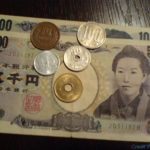Yesterday’s trade saw USD/ZAR within the range of 10.7288 – 10.6873. The pair closed at 10.7186, slipping 0.06% on a daily basis.
At 8:07 GMT today USD/ZAR was down 0.20% for the day to trade at 10.6904. The pair held in a daily range between 10.6861, touched at 07:55 GMT, and 10.7213, having broken the first daily pivot support.
Fundamental view
United States
Durable goods orders in the United States probably rose by 7.5% in July, according to the median forecast by experts, following a revised 1.7% jump during the prior month.
Durable goods orders, as an indicator, gauge the strength of US manufacturing sector and represent a major portion of nations Factory Orders. This is a closely watched report on manufacturing activity, because durable goods are the first type of goods to be affected by an economic downturn or upturn.
Durable goods are designed to last three or more years and encompass aircraft, automobiles and buses, cranes, machine parts, appliances etc. More than 85 industries are represented in the sample, which covers the entire United States. The logic behind this indicator is that consumers need to be very optimistic in order to buy an automobile in comparison with, for example, first necessities such as food or clothing. Therefore, durable goods are among the first goods, which a consumer may abstain from purchasing, in case overall economic activity begins to contract. The same is valid for company purchases. During a recession, an airliner is less likely to purchase new planes and as factory output contracts, it is less likely to purchase new machines.
Durable goods orders, which exclude transportation, likely rose by 0.5% in July, following the previous months upward-revised 1.9% jump. Large ticket orders, such as automobiles for civil use or aircraft, are not present in the calculation due to their volatility. This way the index provides a more reliable information in regard to orders of durable goods.
In case orders increased at a faster pace than projected, this would have a bullish effect on the greenback. US Census Bureau is scheduled to release the official numbers at 12:30 GMT.
Later in the day Standard & Poors will release its S&P/Case-Shiller House Price Index, which measures the change in prices of single-family homes in 20 metropolitan areas across the US. The report serves as a gauge of the US housing markets health. According to preliminary estimates, the respective homes price probably rose by 1.0% on a monthly basis in June, compared to 1.1% a month earlier, while marking an 8.4% jump on an annual basis, down from the previous periods 9.3% rise.
Also due on Tuesday, at 14:00 GMT, is the Conference Boards August US consumer confidence index. According to preliminary estimates, CB will report that consumer confidence fell in August, with its index dropping to 89.0 from 90.9 in July. The report measures the level of individuals confidence in the US economic activity. It is considered as a leading indicator as it gives an early insight into consumer spending, which accounts for most of GDP. Thus, higher consumer confidence is generally seen as bullish for the US dollar, while worsening sentiment is regarded as bearish.
South Africa
South Africas Gross Domestic Product probably rose by rose by an annualized 1.2% in the second quarter, compared to the previous three month periods 1.6% growth. On a quarterly basis, the South African economy is expected to have expanded by 0.9%, rebounding from a 0.6% contraction in the preceding quarter.
Prepared by Statistics South Africa, the South African Gross Domestic Product measures the total monetary value of finished goods and services produced in South Africa over a certain time period. Although it is not a precise measure of national economic well-being, GDP is deemed as a broad measure of the economys health and activity.
The report on GDP holds a lot of weight for traders, operating in the Foreign Exchange Market. It serves as evidence of growth in a productive economy, or as evidence of contraction in an unproductive one. As a result, currency traders will look for higher rates of growth as a sign that interest rates will follow the same direction. Higher interest rates will attract more investors which in terms will increase demand for the common currency. If an economy is experiencing a robust rate of growth, the benefits will eventually affect the end consumer, because of the increased likelihood of spending. Furthermore, through increased consumer expenditures the economy has the potential to expand even more.
Technical view
According to Binary Tribune’s daily analysis, the central pivot point for the pair is at 10.7116. In case USD/ZAR manages to breach the first resistance level at 10.7358, it will probably continue up to test 10.7531. In case the second key resistance is broken, the pair will probably attempt to advance to 10.7773.
If USD/ZAR manages to breach the first key support at 10.6943, it will probably continue to slide and test 10.6701. With this second key support broken, movement to the downside will probably continue to 10.6528.
The mid-Pivot levels for today are as follows: M1 – 10.6615, M2 – 10.6822, M3 – 10.7030, M4 – 10.7237, M5 – 10.7445, M6 – 10.7652.
In weekly terms, the central pivot point is at 10.6714. The three key resistance levels are as follows: R1 – 10.7718, R2 – 10.8510, R3 – 10.9514. The three key support levels are: S1 – 10.5922, S2 – 10.4918, S3 – 10.4126.






